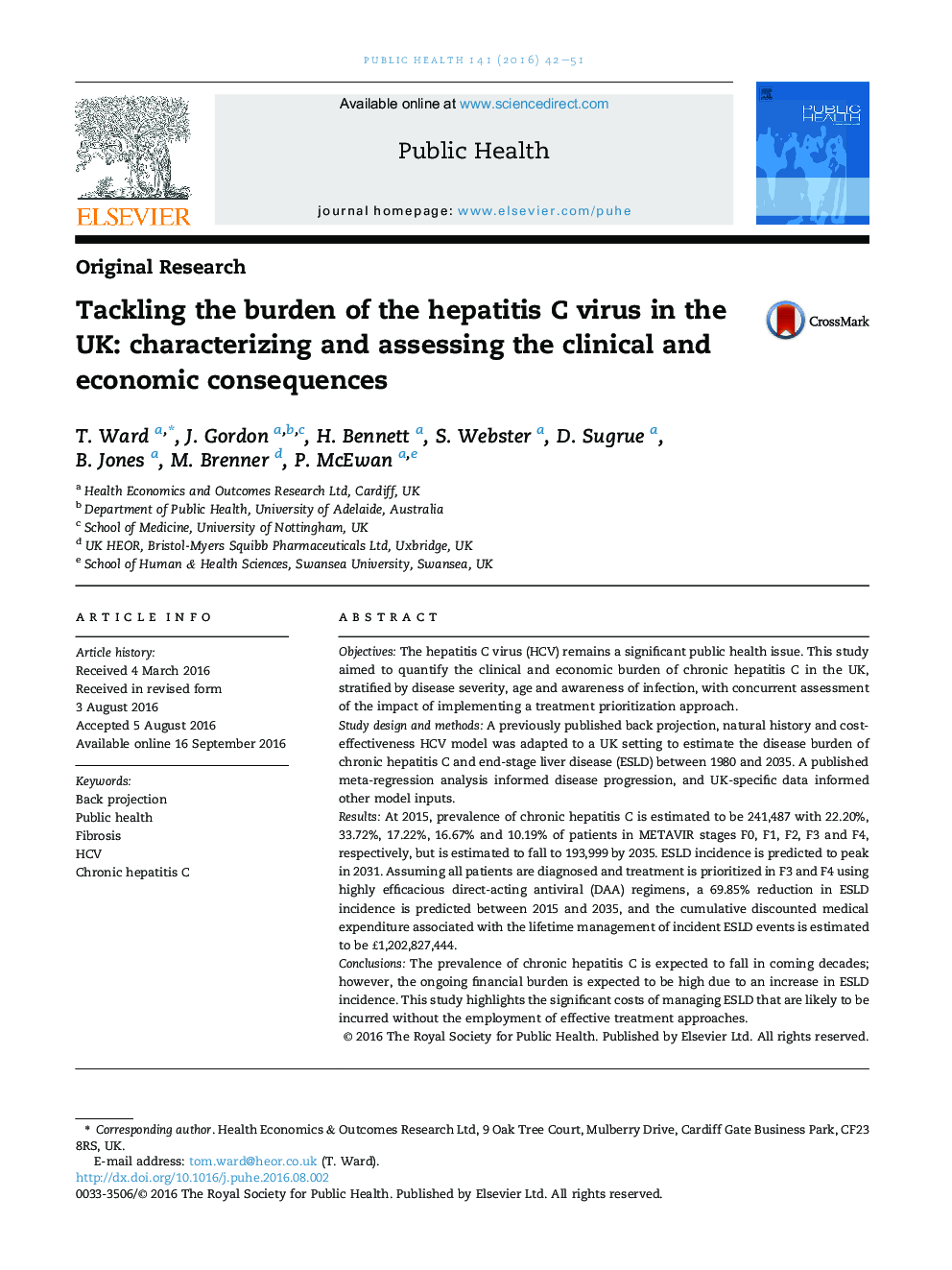| کد مقاله | کد نشریه | سال انتشار | مقاله انگلیسی | نسخه تمام متن |
|---|---|---|---|---|
| 5123073 | 1487202 | 2016 | 10 صفحه PDF | دانلود رایگان |
- Although HCV prevalence is expected to fall, the financial burden is expected to increase due to increasing ESLD incidence.
- This study highlights the significant costs of managing ESLD complications without the use of DAAs or treatment prioritisation.
- Partitioning patients according to certain characteristics equips policy makers for efficient treatment prioritisation.
- An estimated £1,202,827,444 (discounted) will be attributable to the management of ESLD patients progressing over 2015-2035.
- The benefits of targeting patients with advanced disease may only be fully realised with the use of therapies with high SVR.
ObjectivesThe hepatitis C virus (HCV) remains a significant public health issue. This study aimed to quantify the clinical and economic burden of chronic hepatitis C in the UK, stratified by disease severity, age and awareness of infection, with concurrent assessment of the impact of implementing a treatment prioritization approach.Study design and methodsA previously published back projection, natural history and cost-effectiveness HCV model was adapted to a UK setting to estimate the disease burden of chronic hepatitis C and end-stage liver disease (ESLD) between 1980 and 2035. A published meta-regression analysis informed disease progression, and UK-specific data informed other model inputs.ResultsAt 2015, prevalence of chronic hepatitis C is estimated to be 241,487 with 22.20%, 33.72%, 17.22%, 16.67% and 10.19% of patients in METAVIR stages F0, F1, F2, F3 and F4, respectively, but is estimated to fall to 193,999 by 2035. ESLD incidence is predicted to peak in 2031. Assuming all patients are diagnosed and treatment is prioritized in F3 and F4 using highly efficacious direct-acting antiviral (DAA) regimens, a 69.85% reduction in ESLD incidence is predicted between 2015 and 2035, and the cumulative discounted medical expenditure associated with the lifetime management of incident ESLD events is estimated to be £1,202,827,444.ConclusionsThe prevalence of chronic hepatitis C is expected to fall in coming decades; however, the ongoing financial burden is expected to be high due to an increase in ESLD incidence. This study highlights the significant costs of managing ESLD that are likely to be incurred without the employment of effective treatment approaches.
Journal: Public Health - Volume 141, December 2016, Pages 42-51
